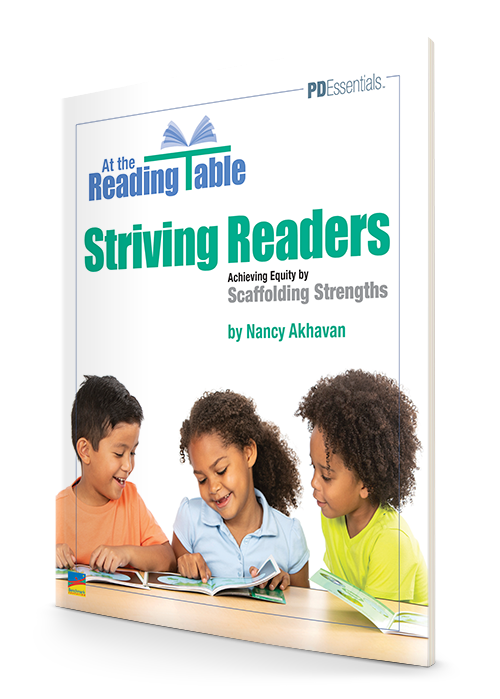- Benchmark Education
- Newmark Learning
- Reycraft Books
- Create an Account
How to Ensure Equitable Instruction at the Reading Table

by Dr. Nancy Akhavan
I speak with many teachers who wonder about small-group instruction for reading. I get it: teaching whole-group reading may be what they have done routinely, and they are unsure of how to set up for small groups, or what the class would be doing (without falling apart) while teaching small groups.
I think that small-group reading instruction is the hallmark of a good reading program. I also think that for many teachers, small-group reading instruction feels like a lot of work to plan and implement well. Over the years, I have developed small-group reading routines that I think really help teachers implement without feeling overstretched or unsure—these routines are based on really knowing your students well. They are too numerous to list here, but I do want to share one important thing: how to ensure equitable instruction at the reading table.
Small-group reading instruction can be joyful. I think what motivates each of us to implement it is the desire to really know and understand each student and know that they are learning at their highest potential.
When we teach in small groups, we have the opportunity to make learning equitable. Learning cannot be equitable if each student is not getting the support, reading practice, and instruction that he or she needs to become a strong reader. By equitable I mean that each student receives instruction that each student needs. It is about teaching to all, not teaching to most.
When we teach reading in whole group only, we are teaching to most, hoping that each student takes something away that helps them become stronger readers. But each student brings unique and varied literacy experiences with them that strengthen their ability to read well, and we need to capitalize on their strengths and provide instruction for each student based on his or her best next learning step.
Small-group reading instruction also provides us the opportunity to see each student as an individual and affirm the students’ race, ethnicity, and culture. We cannot teach with cultural blindness; we need to teach with cultural responsiveness. Being culturally responsive as a teacher means understanding the powerful and unique experiences each student brings with them as readers. Each student is different, and truthfully, calling all instruction that follows best practices “just good teaching” homogenizes the learning experience for our students. This is unfortunate because each student is unique and students have different learning needs.
Equitable instruction is about providing each student what they deserve as a learner. All students deserve teachers who knows their strengths, and deserve to have instruction tailored to lift them up so that they can become strong readers. Failure to learn can occur during instruction that is modeled after conventional educational structures, which are European American cultural constructs (Gay, 2018). Knowing your students’ learning needs means understanding students ethnically and culturally. Teaching is most effective when factors such as literacy experiences, cultural backgrounds, and ethnic identities of students are included in implementation. There are different expectations in different cultures and ethnicities for mannerisms for paying attention, nonverbal communication, and the duration of time each child can “sit and get” without moving their attention (and their bodies) elsewhere. For example, sitting for long periods of time and having to individually monitor concentration is actually a traditional cultural construct and does not always match all students’ needs.
When we teach reading in small groups, we have the opportunity to get to know our students well. Our ability to be informed by students’ ethnicities and cultural and individual needs increases our ability to honor each student and help them with reading in a way that they deserve. We are not teaching in small groups to “correct” students reading habits, or “fix” students' learning; we are teaching in small groups to ensure students succeed. Learning at the reading table begins with fostering each students’ confidence and courage to read as you continue to guide and coach through more complex and difficult text. If we lean in to teaching in small groups, adjusting our teaching to ensure students' highest reading potential, we can make a difference.
What Next?
Join author Nancy Akhavan for a free PD webinar exploring one simple but powerful idea: All students can be strong readers! Dr. Akhavan will share strategies for providing instruction that strengthens students’ reading abilities and reinforces the joy of reading. Watch now!
About the Author
 |
Dr. Nancy Akhavan is a nationally known educator and author. She is an Associate Professor in the Department of Educational Leadership at Fresno State, in California. Previously, she has served as an assistant superintendent, principal, coach, and EL teacher. She is the author of At the Reading Table with Striving Readers: Achieving Equity by Scaffolding Strengths. |
You May Like: At the Reading Table with Striving Readers: Achieving Equity by Scaffolding Strengths

















